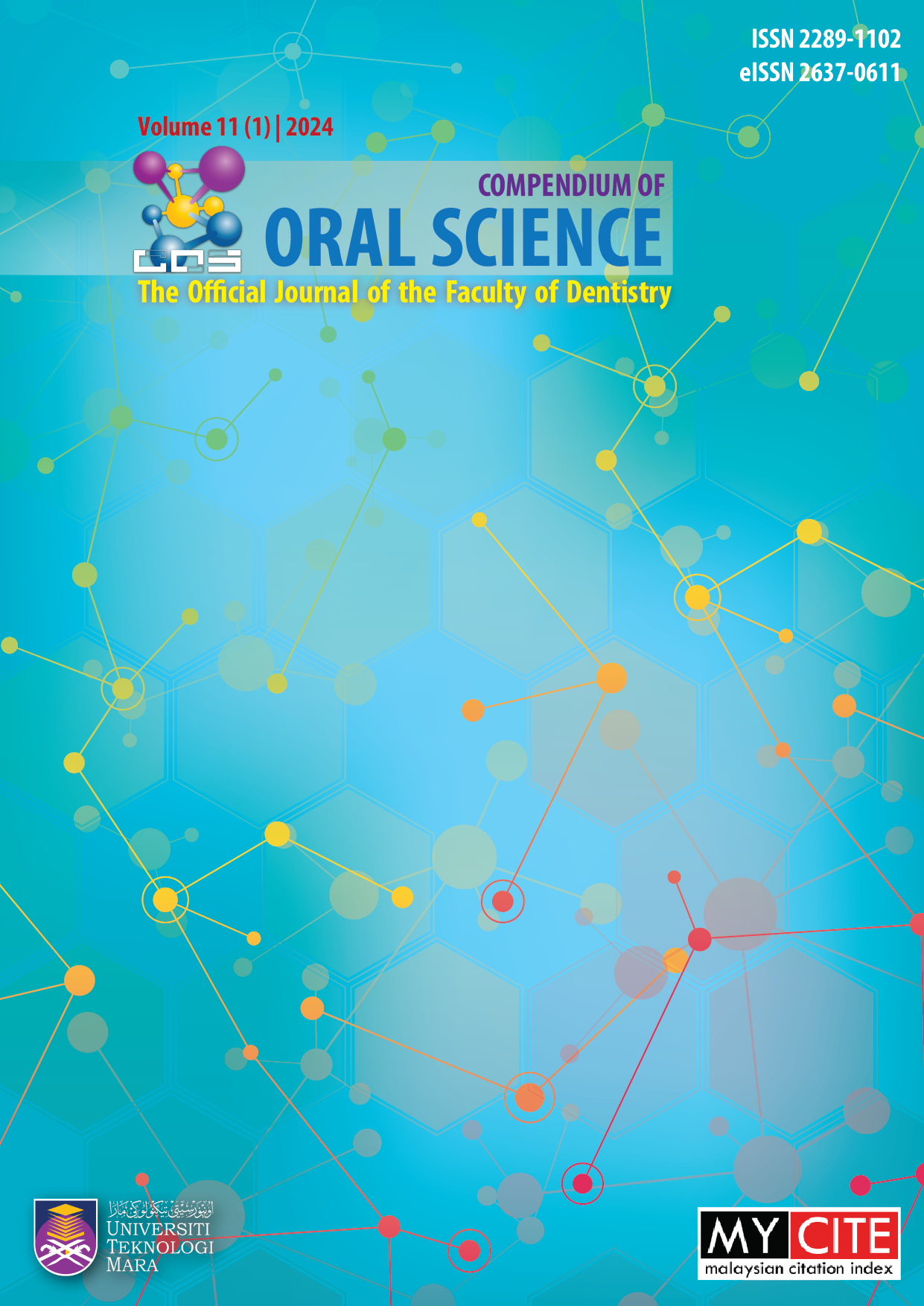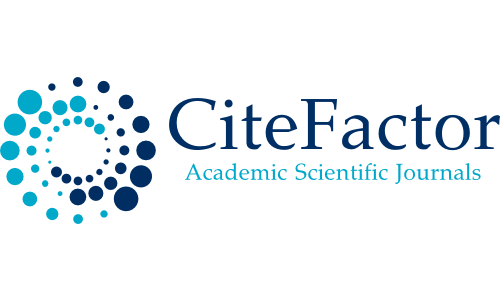The Effect of Different Methods of Nano SiO2 coating on Thermoplastic Partial Denture Clasp Materials and Their Effect on Hydrophobicity
DOI:
https://doi.org/10.24191/cos.v11i1.26034Keywords:
nano SiO2 coating, Thermoplastic partial denture clasp, materials, SEM surface topography, WettabilityAbstract
Objectives: This in-vitro study aimed to determine the best coating technique of nano SiO2 liquid material and its effect on hydrophobicity of thermoplastic partial denture clasp resins. Materials and methods: 80 thermoplastic disc specimens (Acetal, n=40 and Polyamide, n=40) were fabricated. The specimens were randomly divided into 4 subgroups (n=10/group); brush coating, spray coating, dip coating and uncoated as control group. SEM was used to evaluate the surface topography and the spread of coating material. The subjective method, image quality assessment was used to quantify the images’ quality. The mean contact angle was identified by using Image J software. Results: Mean of opinion score of SEM showed that dip-coated specimens of the two tested materials showed the best coating spread quality among the other coating techniques. Image J software measurements revealed that the contact angle of dip-coated acetal and polyamide specimens exhibited the highest contact angle sequentially in comparison to all tested specimens. Conclusion: These results suggest that the dip coating technique has the best results in comparison with the two other coating techniques. Nano SiO2 coating of thermoplastic clasp materials has improved their contact angle which in turn has improved the hydrophobicity of these clasp materials because their external properties are better than those of control specimens. This study will provide a novel external approach for ameliorating thermoplastic partial denture clasp materials using nano SiO2 to enhance their surface properties and solve their limitations and therefore promote the use of these aesthetic clasps.
Downloads
Published
How to Cite
Issue
Section
License
Copyright (c) 2024 Compendium of Oral Science

This work is licensed under a Creative Commons Attribution-NonCommercial 4.0 International License.
Materials contained in the journal may be reproduced for educational purposes provided that both the author(s) and the journal are appropriately recognised; otherwise duplication is not permitted. No articles, reports, or portions there of may be translated into other languages, published in books, journals, magazines, or any other print form without written permission from the authors and from the journal.
Disclaimer: The statements, opinions and data expressed in the articles and reports herein are those of the author(s) and not of the publisher and the editor(s). The publisher and the editor(s) disclaim responsibility for any injury to persons or property resulting from any schemes, methods, instructions or ideas referred to in the content.















